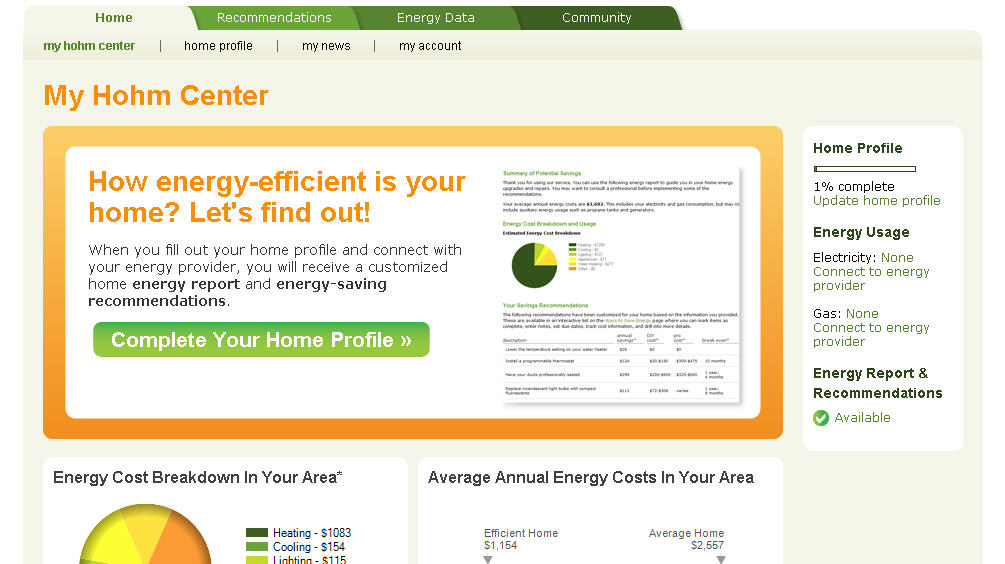Five reasons why Microsoft's Hohm is more than just another Web 2.0 service

Microsoft's Startup Business Accelerator (the folks who brought you the Microsoft Vine public-information service) are introducing another new service on June 24. That offering, known officially as Hohm and which which handles home-energy management, looks like yet another generic Web 2.0-type service.

1. Hohm is a hosted serice running on Azure, Microsoft's cloud platform. There are relatively few Microsoft services that already are running fully on top of Azure. HealthVault is one; Live Mesh is another. The calculations upon which the Hohm service is built are "really complicated," Batterberry said, and require historical modeling. By running on Azure, Hohm can be scaled up or down, depending on demand, to use lots of compute cycles during peak demand.
2. Speakng of HealthVault, Hohm was patterned after it and uses the same security and privacy mechanisms that Microsoft's health-information service uses. While energy consumption data doesn't seem as in need of guarding that patient health data is, energy usage and pricing are information that is sensitive and to which access needs to be controlled, said Batterberry.
3. Hohm is one of Microsoft's first -- but not only -- product tailored to the energy market. (The Dynamics team already launched an energy-management dashboard product last year, making it Microsoft's first energy-specific "product.") Remember how Microsoft began hiring doctors and healthcare experts -- and even bought a healthcare-specific company -- in order to build and field HealthVault and Azyxxi? The company is planning a similarly serious foray into the energy field, building out additional energy-centric software products and services, Batterberry said.
4. Is Microsoft working on an energy-centric search capability/engine, the same way that Microsoft has incorporated health-specific search data into Bing? "It could make sense to go into the decision-specific energy area," Batterberry said.
5. Microsoft considers Hohm part of a "10-year (investment) journey" into the energy market. Microsoft's energy-specific focus will encompass consumers, utility companies, device makers and more, Batterberry said. Microsoft may end up fielding some kind of enerprise-focused energy-management product/service, he said. The company may become a player in the energy-centric device-control space (not a big stretch, given Microsoft's work in embedded operating systems with Windows Embedded Compact).
Users (in the U.S. only for now) interested in test-driving Hohm -- which was codenamed "Niagara," as the energy pioneer Nikola Tesla did a lot of his research in Niagara Falls -- will be able to sign up for the beta this week on the Hohm page. Microsoft is expecting the final version of the service to be released in about six to nine months, Batterberry said.